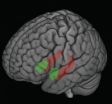(Press-News.org) CORVALLIS, Ore. – Scientists in the United States and India have successfully modified the precursor to one of the drugs used to treat tuberculosis, an important first step toward new drugs that can transcend antibiotic resistance issues that experts consider a serious threat to global health.
The findings, reported in the Journal of Biological Chemistry, indicate that a new compound, 24-desmethylrifampicin, has much better antibacterial activity than rifampicin against multi-drug-resistant strains of the bacteria that cause tuberculosis.
Rifampicin and related drugs are important antibiotics, the key to an effective "drug cocktail" that already takes about six months of treatment to cure tuberculosis, even if everything goes well. But two forms of tuberculosis, referred to as "multi-drug-resistant," or MDR, and "extensively drug-resistant," or XDR, have become resistant to rifampicin.
In 1993, resurging levels of tuberculosis due to this antibiotic resistance led the World Health Organization to declare it a global health emergency. Today more than 1 million people around the world are dying each year from tuberculosis, and after AIDS it remains the second most common cause of death by infectious disease.
"We believe these findings are an important new avenue toward treatment of multi-drug-resistant TB," said Taifo Mahmud, a professor in the College of Pharmacy at Oregon State University, and a corresponding author on the new publication.
"Rifampicin is the most effective drug against tuberculosis, and it's very difficult to achieve a cure without it," Mahmud said. "The approach we're using should be able to create one or more analogs that could help take the place of rifampicin in TB therapy."
A combination of genetic modification and synthetic drug development was used to create the new compound, which so far has only been developed in laboratory, not commercial quantities. Further development and testing will be necessary before it is ready for human use, researchers said.
Drug resistance in rifampicin and related antibiotics has occurred when their bacterial RNA polymerase enzymes mutate, Mahmud said, leaving them largely unaffected by antibiotics that work by inhibiting RNA synthesis. The new approach works by modifying the drug so it can effectively bind to this mutated enzyme and once again achieve its effectiveness.
"We found out how the antibiotic-producing bacteria make this compound, and then genetically modified that system to remove one part of the backbone of the molecule," Mahmud said. "Understanding this whole process should allow us to create not just this one, but a range of different analogs that can be tested for their efficacy as new antibiotics."
In human history and before the advent of antibiotics, tuberculosis was one of the great infectious disease killers in the world. At its peak in the 1800s in Europe, it was the cause of death of one in four people. It's still a major concern in the developing world, where drugs are often not available to treat it, and it often causes death in tandem with HIV infection.
As the bacterial strains of this disease that are multi- or extensively-drug-resistant increase in number, so too does the difficulty of treating it. Instead of a six-month regimen, these drug-resistant strains can take 18 months to several years to treat, with antibiotics that are more toxic and less effective.
Collaborators on this research were from the University of Delhi and the Institute of Genomics and Integrative Biology in India. The research has been supported by the M.J. Murdock Charitable Trust and the Medical Research Foundation of Oregon.
The approach used in this research "holds great potential to generate more rifamycin analogs to combat the threat of MDR strains of M. tuberculosis, and/or other life-threatening pathogens," the researchers wrote in their conclusion.
INFORMATION:
Research may yield new ways to treat antibiotic-resistant TB
2014-06-27
ELSE PRESS RELEASES FROM THIS DATE:
Youth regularly receive pro-marijuana tweets
2014-06-27
AUDIO:
Twitter has become one of the most popular social media sites among young people, and researchers at Washington University School of Medicine in St. Louis have been looking at Twitter....
Click here for more information.
Hundreds of thousands of American youth are following marijuana-related Twitter accounts and getting pro-pot messages several times each day, researchers at Washington University School of Medicine in St. Louis have found.
The tweets are cause for ...
A new species of moth from the Appalachian Mountains named to honor the Cherokee Nation
2014-06-27
A small, drab and highly inconspicuous moth has been flitting nameless about its special niche among the middle elevations of one of the world's oldest mountain ranges, the southern Appalachian Mountains in North America. A team of American scientists has now identified this new to science species as Cherokeea attakullakulla and described it in a special issue of the open access journal ZooKeys.
In all probability, it has been frequenting these haunts for tens of millions of years before the first humans set foot on this continent, all the while not caring in the least ...
Kids who know unhealthy food logos more likely to be overweight
2014-06-27
The more a child is familiar with logos and other images from fast-food restaurants, sodas and not-so-healthy snack food brands, the more likely the child is to be overweight or obese.
And, unfortunately, studies have shown that people who are overweight at a young age, tend to stay that way.
A research team that included a Michigan State University professor tested kids on their knowledge of various brands – including their ability to identify items such as golden arches, silly rabbits and a king's crown – and found that those who could identify them the most tended ...
'Compressive sensing' provides new approach to measuring a quantum system
2014-06-27
In quantum physics, momentum and position are an example of conjugate variables. This means they are connected by Heisenberg's Uncertainty Principle, which says that both quantities cannot be simultaneously measured precisely. Recently, researchers have been developing novel techniques, such as "weak measurement," to measure both at the same time. Now University of Rochester physicists have shown that a technique called compressive sensing also offers a way to measure both variables at the same time, without violating the Uncertainty Principle.
In a paper published in ...
Developmental psychologist explains her life's work studying the mysteries of the mind
2014-06-27
HAMILTON, ON, June 27, 2014—Developmental psychologist Daphne Maurer has spent more than four decades studying the complexities of the human mind.
As the director of the Visual Development Lab at McMaster University and president of the International Society on Infant Studies, Maurer will present her life's work at the Biennial International Conference on Infant Studies in Berlin July 4th.
Over the course of her career she has established a reputation for building new understanding of one of the most challenging and mysterious aspects of human development: how our ...
Monkeys also believe in winning streaks, study shows
2014-06-27
Humans have a well-documented tendency to see winning and losing streaks in situations that, in fact, are random. But scientists disagree about whether the "hot-hand bias" is a cultural artifact picked up in childhood or a predisposition deeply ingrained in the structure of our cognitive architecture.
Now in the first study in non-human primates of this systematic error in decision making, researchers find that monkeys also share our unfounded belief in winning and losing streaks. The results suggests that the penchant to see patterns that actually don't exist may be ...
EARTH Magazine: Rosetta off to decipher a comet's secrets
2014-06-27
Alexandria, Va. — "Hello World." Upon hearing that brief message, scientists at the European Space Agency (ESA) and followers around the world sent up a collective cheer. Rosetta — the ESA spacecraft currently on a 10-year mission to orbit and land on a comet — awoke in January after a three-year hibernation, and was ready to get to work.
The Rosetta spacecraft launched on March 2, 2004, to study Comet 67P/Churyumov-Gerasimenko. In August, Rosetta will enter the comet's orbit. By November, scientists will plant a lander on the comet, in the hope of learning more about ...
Early life stress can leave lasting impacts on the brain
2014-06-27
MADISON, Wis. — For children, stress can go a long way. A little bit provides a platform for learning, adapting and coping. But a lot of it — chronic, toxic stress like poverty, neglect and physical abuse — can have lasting negative impacts.
A team of University of Wisconsin-Madison researchers recently showed these kinds of stressors, experienced in early life, might be changing the parts of developing children's brains responsible for learning, memory and the processing of stress and emotion. These changes may be tied to negative impacts on behavior, health, employment ...
Are conservatives more obedient and agreeable than their liberal counterparts?
2014-06-27
Over the last few years, we've seen increasing dissent among liberals and conservatives on important issues such as gun control, health care and same-sex marriage. Both sides often have a difficult time reconciling their own views with their opposition, and many times it appears that liberals are unable to band together under a unifying platform. Why do conservatives appear to have an affinity for obeying leadership? And why do conservatives perceive greater consensus among politically like-minded others? Two studies publishing in Personality and Social Psychology Bulletin ...
Extinct undersea volcanoes squashed under Earth's crust cause tsunami earthquakes, according to new research
2014-06-27
New research has revealed the causes and warning signs of rare tsunami earthquakes, which may lead to improved detection measures.
Tsunami earthquakes happen at relatively shallow depths in the ocean and are small in terms of their magnitude. However, they create very large tsunamis, with some earthquakes that only measure 5.6 on the Richter scale generating waves that reach up to ten metres when they hit the shore.
A global network of seismometers enables researchers to detect even the smallest earthquakes. However, the challenge has been to determine which small ...



